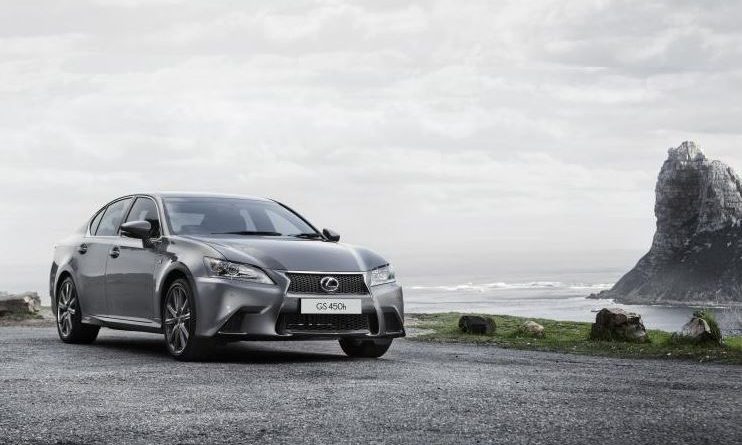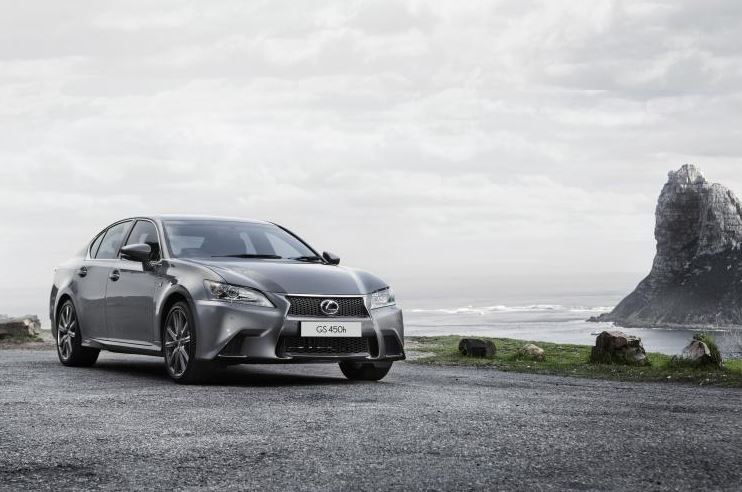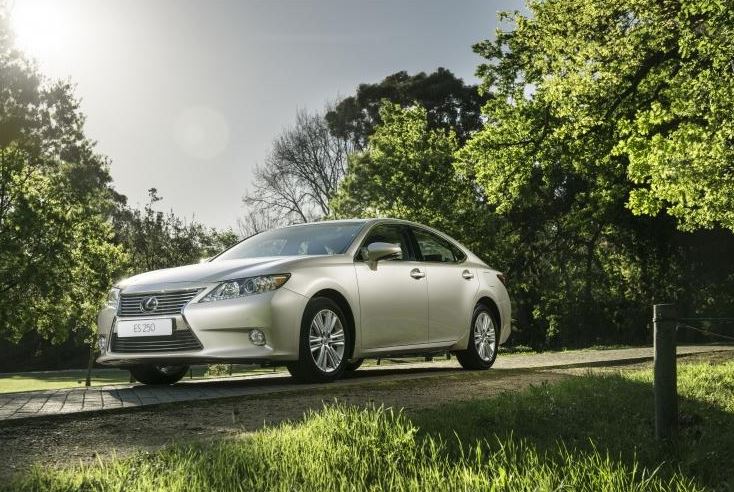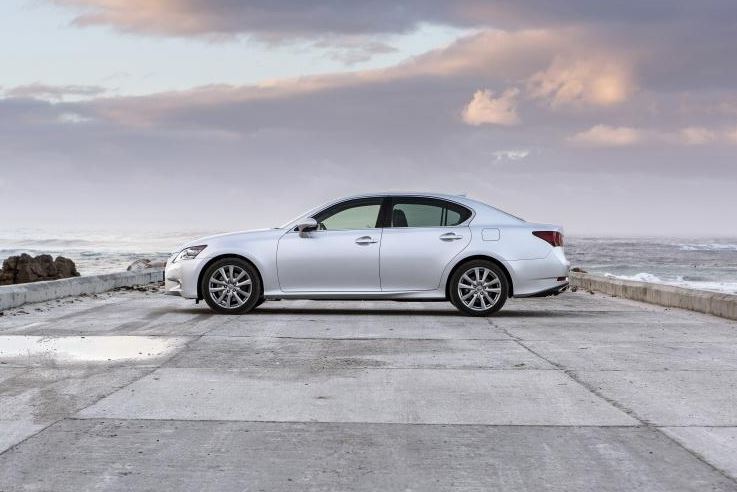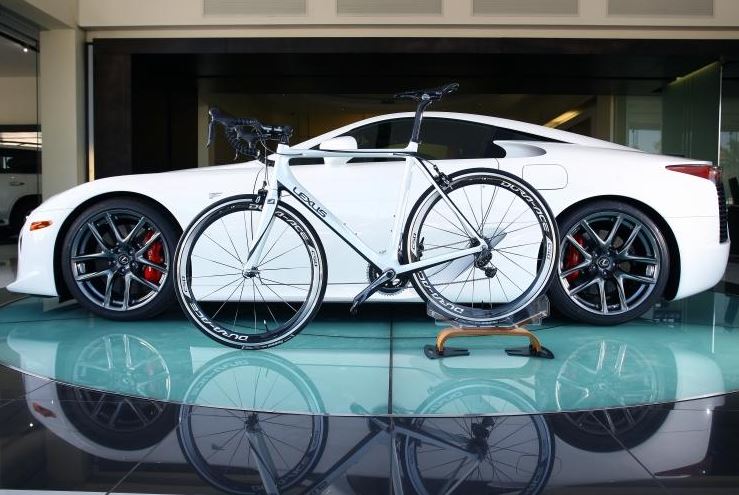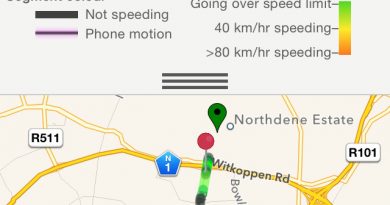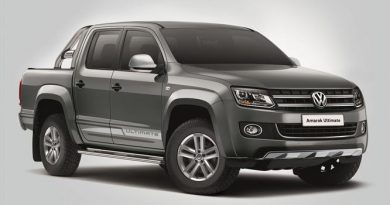Lexus at the Johannesburg International Motor Show
- ES 250 shown to the public for the first time
- LFA Supercar on display
- Mild refresh for RX range
Lexus has revamped all of its models with distinctive lines and styling cues, most notably its spindle grille and signature headlamps and taillights. This commitment to design is reflected in the Lexus display at this year’s Johannesburg International Motor Show (JMS).
The stand is inspired by Lexus’ design philosophy and provides an ideal showcase for the new look, luxury and technology of Lexus vehicles.
The Lexus display incorporates dramatic features such as the ‘treasure’ box with mirror accents to showcase the iconic LFA supercar.
As Justin Ryan, General Manager of Lexus South Africa points out, Lexus has always been about mastering the details, whether it’s in its products, or how customers are treated. “Now, as we enter a new phase, we are looking at every detail of how customers see the Lexus brand and ensuring we look ‘perfect’ from every angle,” Ryan says.
Lexus ES 250
The all-new Lexus ES 250 rightfully moves into the place of honour at JMS, a simple raised plinth at the front of the stand, to indicate its top billing at the show.
Now in its sixth generation and credited with being the top-selling Lexus sedan globally, the ES will present unrivalled value in the premium segment of the South African market when it goes on sale early next month.
As the luxury vehicle subsidiary of automotive giant Toyota, Lexus has always managed to effectively combine affordability with premium luxury, reliability and performance – accomplished ranges such as the IS, GS, CT and LS offer excellent value for money in their respective passenger car segments. However, with the ES, the company sets out to redefine the entry-premium segment, because in terms of pricing, the ES at R435 900 slots in just below the newly minted IS range, but in terms of interior space, it offers roominess closer to that of the GS.
For the first time in its 24-year history, the ES is available with Lexus Hybrid Drive (see ‘Also available in Green’), while the ES 250 is powered by a 2,5-litre four-cylinder engine that employs dual-VVT-i technology that controls valve timing on both the intake and exhaust camshafts for optimal performance and efficiency at all engine speeds.
The ES 250’s peak output figures are 135 kW at 6 000 r/min and 235 Nm of torque at 4 100 r/min, and the engine is mated with a six-speed automatic transmission. The ES 250 will sprint from zero to 100 km/h in 9,8 seconds and achieve a maximum speed of 207 km/h, with a combined fuel consumption figure of 8,0 litres/100 km and a CO2 emissions figure of 188 g/km.
The model features a Drive Mode selector that allows a driver to choose Normal, Eco and Sport driving modes. Normal mode provides a blend of performance and efficiency that is suited to everyday driving conditions, while Eco mode favours fuel economy. Sport mode increases powertrain and steering responsiveness, which, allied with a stiffer body, wider track and an upgraded suspension, endows the ES with commendable handling properties.
The ES’s interior is also particularly roomy. Compared with the outgoing model (which was not made available in SA), the newcomer has a reduced steering-wheel angle for improved driving comfort, while the front seats can be lowered by a further 15 mm for better headroom. Rear headroom has increased by 20 mm and rear kneeroom by 60 mm. Luggage capacity is 490 dm3.
The simplicity and elegance of the interior complements the graceful L-Finesse-inspired exterior design to a tee. Standard features include the second-generation Remote Touch interface with eight-inch full-colour monitor, a navigation system, leather trim with high-quality stitching and tasteful ambient lighting. The ES also shares features such as a classic analogue clock and Nano-e climate-control system with its sibling, the GS.
Additional standard equipment include a moonroof, Smart entry system with push-button start, power seats with seat heaters (with driver’s seat memory), electrochromatic rear-view mirror, heated and electrically adjustable side mirrors (with memory), a reverse-view display and parking sensors front and rear. Cruise control, tilt-and-reach-adjustable steering column, an electric rear sunshade, EMV Display with eight-speaker audio system incorporating a radio, CD/DVD player, Bluetooth, as well as auxiliary and USB inputs are also standard.
What’s more, the new ES provides a wealth of advanced passive and active safety features, such as 10 airbags, Blind Spot Monitoring with Lane Change Assist, Vehicle Stability Control (VSC), ABS with EBD and Brake Assist and Isofix child-seat anchorages. ES models have four-year/100 000 km warranties and four-year/100 000 km Lexus Distance Plan Plus (maintenance plans).
Also available in green
The ES 300h marks the first time that a petrol-electric hybrid powertrain is offered in the ES range. It’s powered by a 2,5-litre single VVT-i petrol engine (which develops 118 kW at 5 700 r/min and 213 N.m of torque at 4 500) mated with a 105 kW electric motor fed by a 650 V nickel-metal hydride battery, for a combined output of 151 kW.
The ES 300h is equipped with an eCVT transmission and accelerates to 100 km/h from standstill in 8,5 seconds, but offers a level of combined fuel consumption (5,5 litres/100km) that’s generally associated with those of compact vehicles. The ES 300h features a hybrid-specific front grille and rear spoiler.
As with the ES 250, drive mode select is standard on the ES 300h, but there is an additional EV mode specific to the hybrid. The model’s also equipped with a hill-start-assist system and a revised instrument cluster that includes hybrid-specific instrumentation.
The addition of batteries for the ES 300h’s electric motor does encroach on the car’s boot space, but still leaves more than enough room (the luggage capacity is 425 dm3 as opposed to the 490 dm3 of the ES 250 model).
Q&A with Justin Ryan, General Manager of Lexus South Africa
Explain how the ES fits into the Lexus saloon range?
The introduction of ES to the local market is a direct result of customer demand for a more accessible, value-oriented luxury offering from Lexus and we are pleased to have secured not one, but two options for them while simultaneously expanding our innovative hybrid vehicle portfolio (the ES 300h petrol-electric hybrid will be available on order). Price-wise the new ES slots in just below the IS range but dimensionally it offers accommodation closer to that of the GS – think of it as the spacious and comfortable alternative to the more dynamically focused IS and GS ranges. Elegantly styled yet suitably bold, the ES is underpinned by a chassis that offers satisfying driving qualities and an incredibly smooth ride. This is matched by unprecedented levels of standard equipment, leading technology and a high quality interior bristling with all the latest luxury, safety and modcon features.
Do you expect cannibalisation from any of your current offerings? / What customers do you aim to attract?
We don’t expect any cannibalisation from other Lexus models for the simple reason that the ES is appealing to a very different target market. In a sense it’s creating a whole niche within the premium segment by attracting buyers who value space and luxury over purely dynamic considerations. Above all, though, they want it all – including the all-important Lexus badge – at a price that’s affordable, i.e. the ES is for people who want the space of a medium premium sedan but at the price point of a compact premium vehicle.
How will the ES distinguish itself against its competitors?
To be honest, the ES is in a class of its own. I know it might sound like I’m chanting a mantra but from a space, appointments, affordability and prestige perspective, there is nothing to touch this Lexus.
Any plans to expand the range in the future?
We will continue to build on the Lexus product portfolio including future performance models while remaining true to the ethos of the brand which is rooted in the pursuit of perfection.
Other models on the Lexus stand at JMS:
- IS 350 – Lexus has covered all the bases and engineered the new IS to deliver the very pinnacle of dynamic performance and driver engagement while retaining the brand’s legendary superlative standards of comfort and kit. If you’re in the market for a sporting sedan with rear-wheel drive, you cannot afford to overlook the new benchmark. A sporty car demands sporty looks and the all-new IS 350’s tightly proportioned design fulfills this brief to a tee – from the signature spindle grille to the tightly scalpelled tail lights that follow the razor-sharp creases that rise from the flanks. The IS 350’s tour de force is the 228kW 3.5 V6 petrol engine featuring D-4S direct and port injection, and Dual VVT-i (Variable Valve Timing-intelligent) to both intake and exhaust camshafts, significantly enhancing engine performance and reducing fuel consumption. Mated to an 8-speed, Sport Direct Shift (SPDS) auto box from the Lexus IS F with G-AI, G force-response gear selection and shift control, Zero to 100 km/h comes up in just 5,9 seconds. Available in standard guise and F-SPORT (aesthetic and handling upgrades), the new IS 350 is making waves amongst the compact executive set.
- GS 450h SE / 350 – representing a complete rethink of an executive sedan with far greater emphasis on driving dynamics, while retaining Lexus standards of interior opulence and overall build quality, the new GS has found favour with critics the world over. With a wider track, more direct steering, aurally engineered exhaust system, an automatic gearbox with paddle shifters and virtual immediate lock-up technology, vented disc brakes and generous use of aluminium the new GS is a dynamic revelation. In true Lexus style the GS offers an unmatched list of luxury features as standard. The GS 350 offers features such as an intelligent climate control system, Lexus Premium Sound, electrically adjustable front seats and steering wheel and full high grade leather trim. As from November 2013, the GS 350 also gets an 8-speed, Sport Direct Shift (SPDS) auto box from the Lexus IS F. In addition, due to customer demand, the GS 350 will, for the first time in SA, be made available with the F-SPORT package. This list of extras just grows longer on the GS 450h models (including full colour heads-up display) – this hybrid model in SE guise will be on display on the Lexus stand. Equipped with a similar V6 petrol engine to the one on the GS 350, the 450h offers 345 Nm of torque; it is tuned for a maximum delivery of 213 kW. This is further complimented by a powerful electric motor and high voltage battery to boost total system output to 252kW. The electric motor also adds a further 275 Nm for impressive response.The drivetrain is coupled with an E-CVT continuously variable gearbox.
- LS 460 – when the new LS460 was launched in March only the exterior door panels remained the same; more than 3 000 major parts and components – from the dashboard, seats and engine control unit – were redesigned or improved. This is a car that is superlative in every way in which every imaginable comfort feature is standard. To highlight just two of these, the LS is equipped with the world’s first Climate Concierge – it measures the temperatures of all occupant zones individually and adjusts four zones (including seat heating and cooling) to best suit each. Another novelty is the Standard Mood Lighting system which creates a soothing ambiance that changes with vehicle usage. On the technical front, the vehicle is equipped with an upgraded 4.6 litre V8 with 32 valves and dual intelligent variable valve timing (Dual VVT-i) that delivers maximum figures of 285 kW at 6 400 rpm and 493 Nm at 4 100 rpm. The engine propels the LS460 to 100 km/h from rest in a blistering 5.7 seconds and top speed is governed at 250 km/h accompanied by a new aural sound track thanks to the inclusion of a new acoustically engineered sound amplifier linked to the V8 engine.
- LFA – representing the pinnacle of engineering excellence, the Lexus LFA is a rare and prestigious vehicle that overturns conventional thinking in both luxury and performance. Only 500 were built of which just three made their way to SA – on display is number 372. Constructed using advanced carbon fibre technology, the rear-wheel drive LFA is powered by a bespoke, high-revving 412kW 4.8-litre naturally aspirated V10 engine, matched to a rear-mounted six-speed sequential automatic transmission. Capable of revving to a wailing 9000 rpm, the V10 produces 480Nm of torque at 7 000rpm, 90 per cent of which is available from 3 700rpm all the way to the 9 000rpm red line. This ensures that a 0 to 100km/h sprint takes just 3.7 seconds and maximum speed of 325km/h is obtainable.
- RX 350 EX – in 2012, the popular RX range received the new Lexus corporate identity and signature spindle grille. For 2014, the RX has been refreshed even further with a new Appearance Pack that is now standard on the RX 350 EX model. This pack comprises a re-designed bumper with larger air intakes to boost the muscularity of the front view. Other changes include new 19-inch alloys (as opposed to the 18-inch units on the outgoing model), as well as LED-type front fog lamps. For the RX 450h SE, the latest upgrade includes the LED interior lighting package as well as the adoption of the Integrated Sport Driving system which enables the driver to tune the Drive Mode Select to Eco, Normal or Sport mode.

